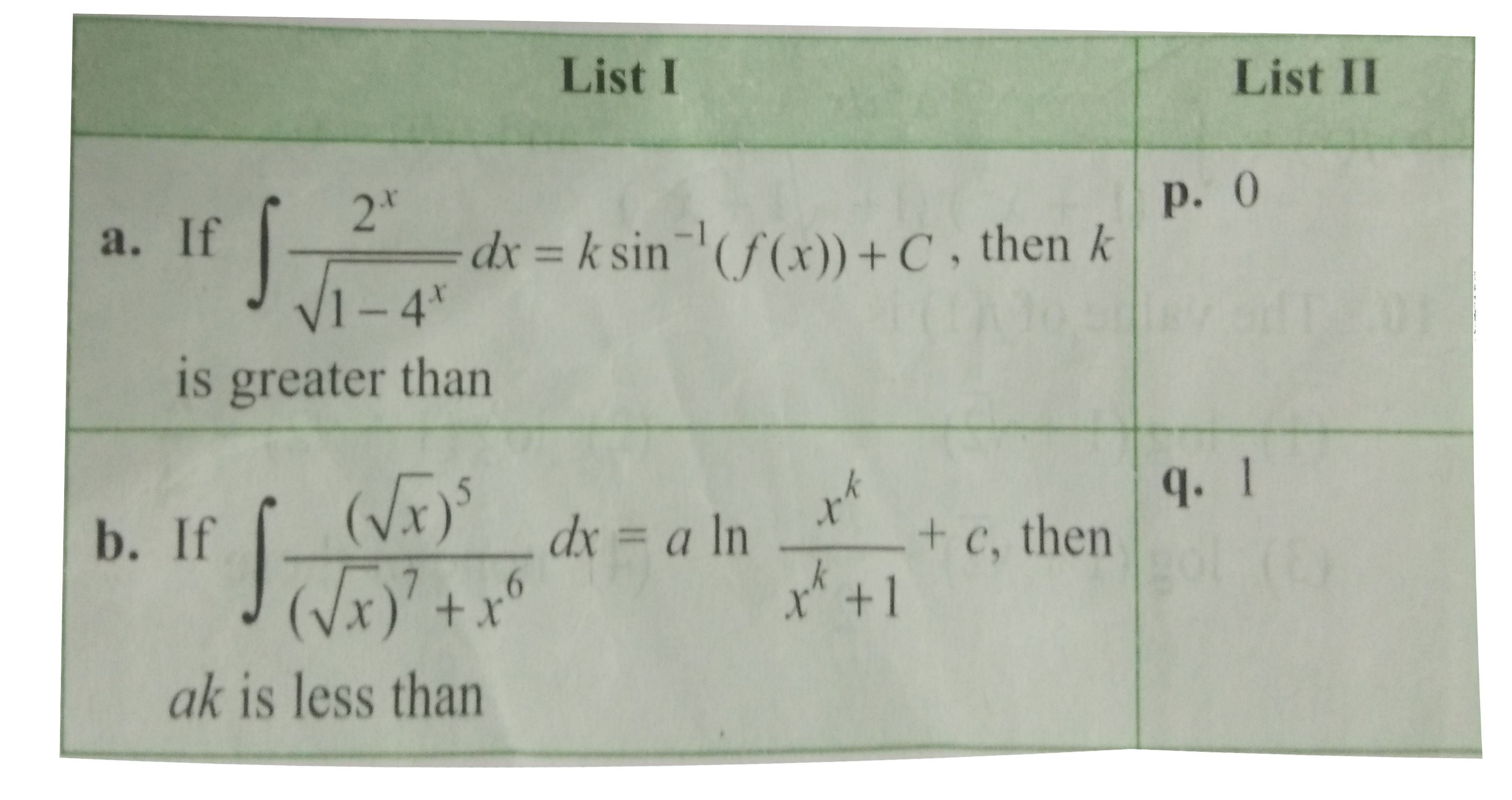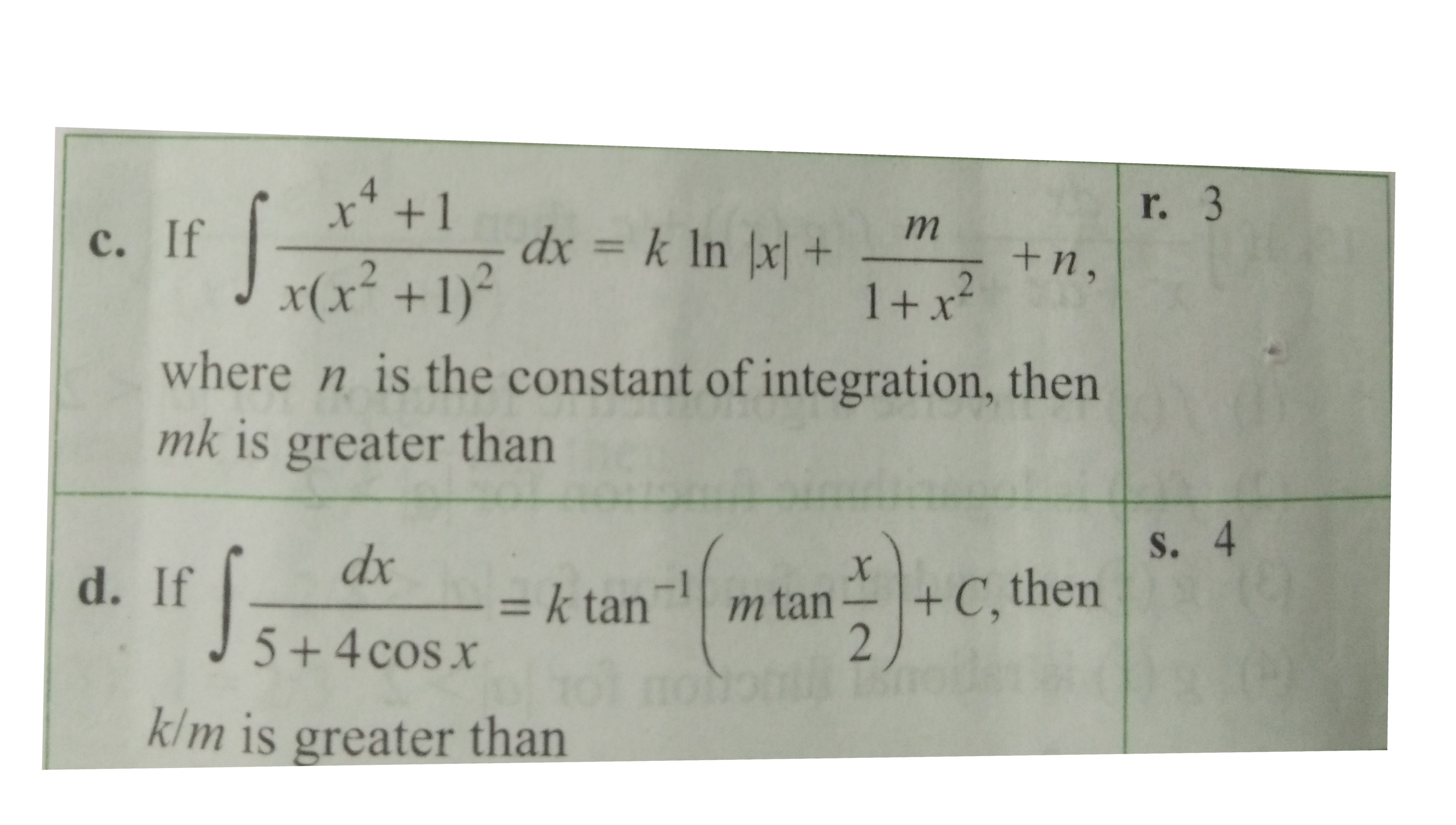If (b) (d) Solution in Bengali
The correct Answer is:B, D
Topper's Solved these Questions
- INDEFINITE INTEGRATIONBOOK - CENGAGE PUBLICATIONCHAPTER - INDEFINITE INTEGRATIONEXERCISE - Exercises (Linked Comprehension Type)
17 Videos
- INDEFINITE INTEGRATIONBOOK - CENGAGE PUBLICATIONCHAPTER - INDEFINITE INTEGRATIONEXERCISE - EXERCISES (Matrix Match Type)
4 Videos
- INDEFINITE INTEGRATIONBOOK - CENGAGE PUBLICATIONCHAPTER - INDEFINITE INTEGRATIONEXERCISE - EXERCISES (Single Correct Answer Type)
77 Videos
- HYPERBOLABOOK - CENGAGE PUBLICATIONCHAPTER - HYPERBOLAEXERCISE - COMPREHENSION TYPE
2 Videos
- INEQUALITIES AND MODULUSBOOK - CENGAGE PUBLICATIONCHAPTER - INEQUALITIES AND MODULUSEXERCISE - Single correct Answer
21 Videos
Similar Questions
y=f(x) is a polynomial function passing through point (0, 1) and which increases in the intervals (1,2)and(3,∞) and decreases in the intervals (∞,1)and(2,3).
If f(1)=−8, then the value of f(2) is
View SolutionMatch the following lists:


View SolutionI=∫sin8x−cos8x1−2sin2xcos2xdx is equal to:
View SolutionThe circle x2+y2−8x=0 and hyperbola x29−y24=1 I intersect at the points A and B. Equation of a common tangent with positive slope to the circle as well as to the hyperbola is (A) 2x−√5y−20=0 (B) 2x−√5y+4=0 (C) 3x−4y+8=0 (D) 4x−3y+4=0
View SolutionIf f(x)=ax2+bx+c and f(−1)≥−4, f(1)≤0 and f(3)≥5, then the least value of a is
View SolutionIf ∫esecx(secxtanxf(x)+secxtanx+tan2x)dx=esecxf(x)+c. Then f(x) is: (A) secx+xtamx+12 (B) xsecx+tanx+12 (C) xsecx+x2tanx+12 (D) secx+tanx+12
View SolutionIf ∫sinxd(secx)=f(x)−g(x)+c, then
View SolutionIf f(x)=2xsecx+x and g(x)=3tanx then in interval x∈(0,π/2) is
View SolutionIf f(x)=|x−2|andg(x)=f[f(x)],theng′(x)= ______ for x>20
View SolutionIf f,g,and h are differentiable functions of x and d(x)=∣∣ ∣ ∣∣fgh(xf)'(xg)'(xh)'(x2f)''(x2g)''(x2h)''∣∣ ∣ ∣∣ prove that d′(x)=∣∣ ∣ ∣∣fghf'g'h'(x3f'')'(x3g'')'(x3h'')'∣∣ ∣ ∣∣
View SolutionIf ∫sinxd(secx)=f(x)−g(x)+c,then f(x)=secx (b) f(x)=tanx g(x)=2x (d) g(x)=x
View SolutionIf ∫sinxd(secx)=f(x)−g(x)+c, then
View SolutionIf f(x)andg(f) are two differentiable functions and g(x)≠0 , then show trht f(x)g(x) is also differentiable ddx{f(x)g(x)}=g(x)dx{f(x)}−g(x)dx{g(x)}[g(x)]2
View SolutionIf ∫ex (tanx+1)secx dx=ex f(x)+C , then write the value of f(x) .
View Solutionlet f(x)=ex,g(x)=sin−1xand h(x)=f(g(x)) t h e n f i n d h′(x)h(x)
View SolutionIf f(x)=ax+b and g(x)=cx+d, then f(g(x))=g(f(x)) is equivalent to (A) f(a) = g(c ) (B) f(b) = g(b) (C) f(d) = g(b) (D) f(c ) = g(a)
View Solution
